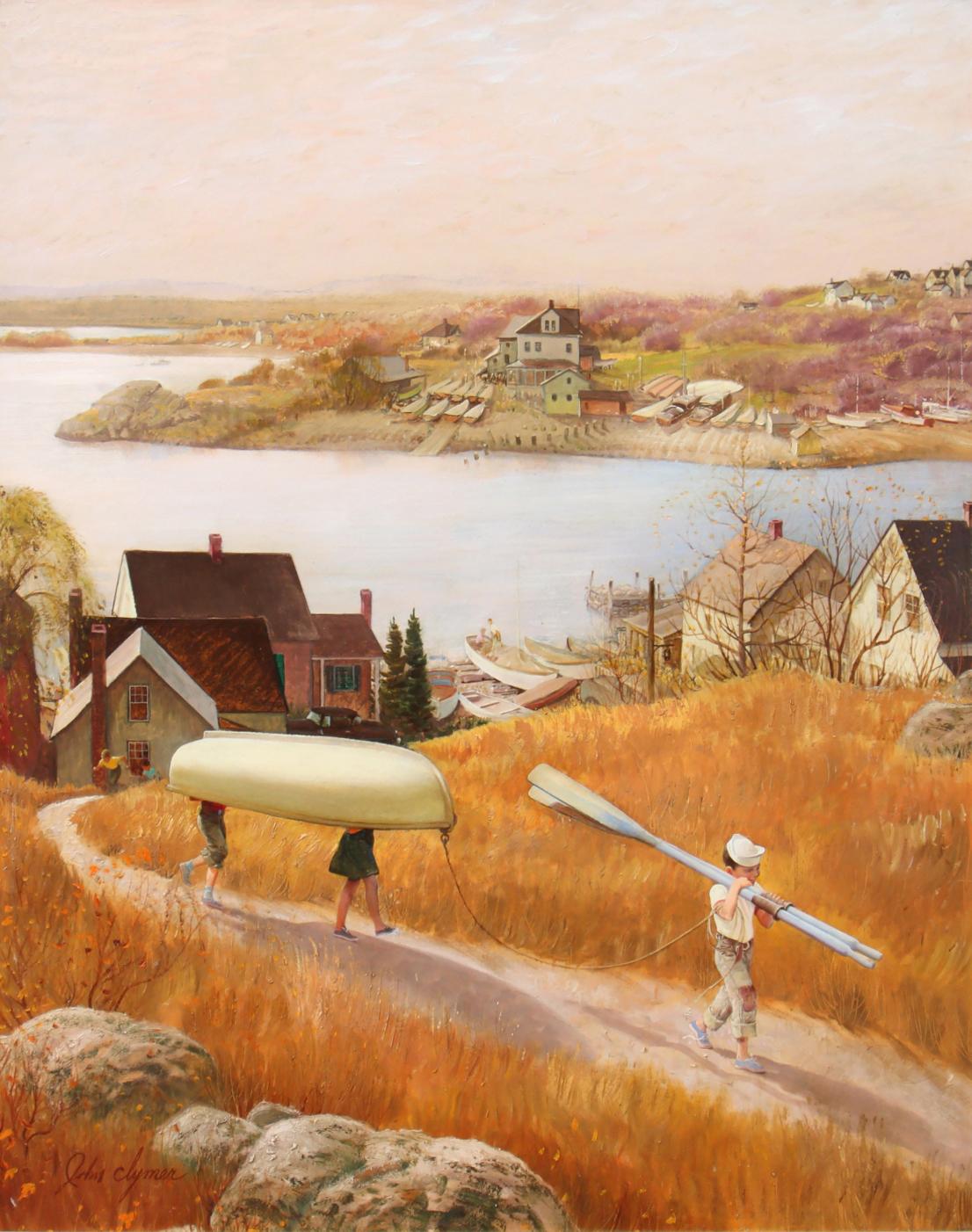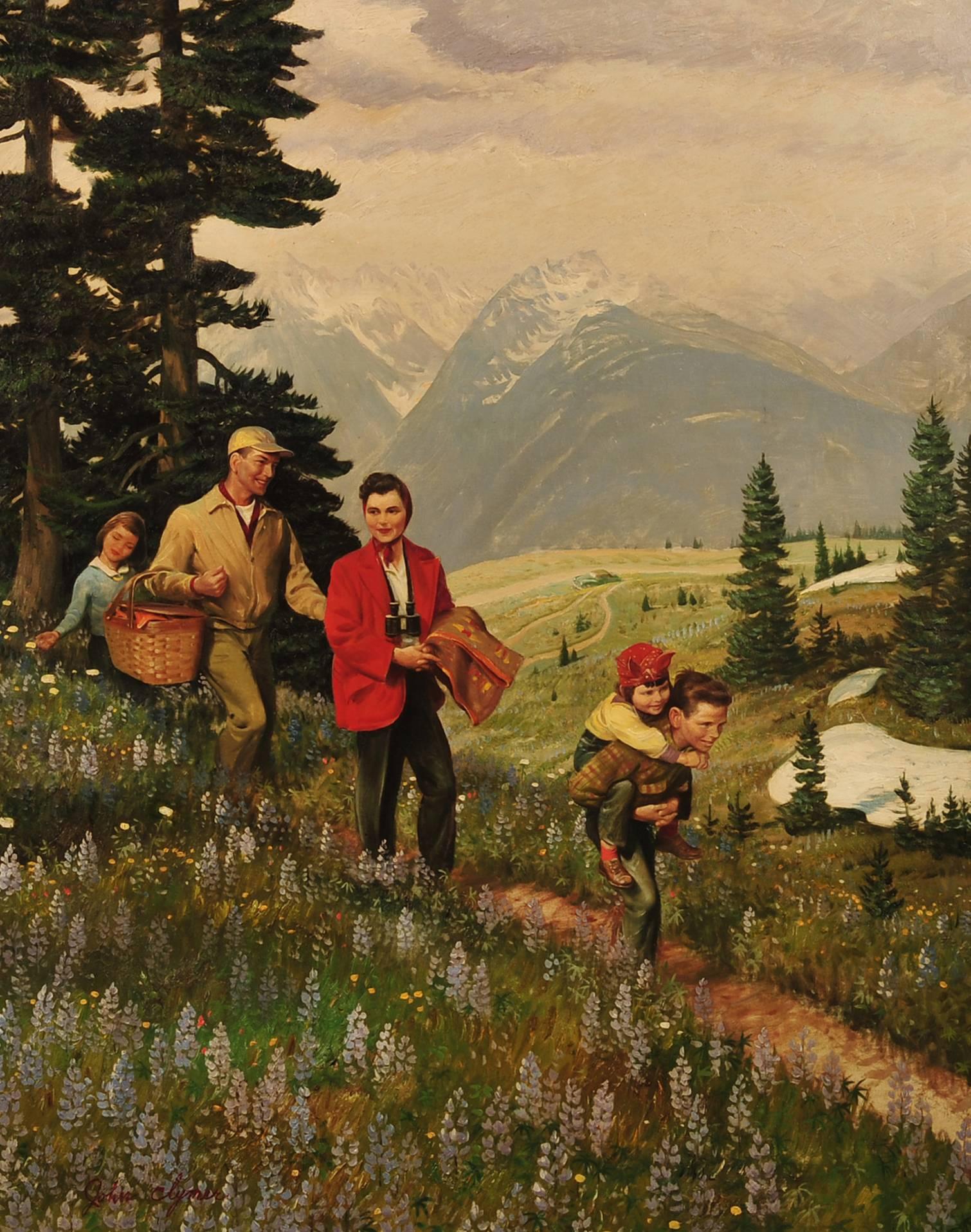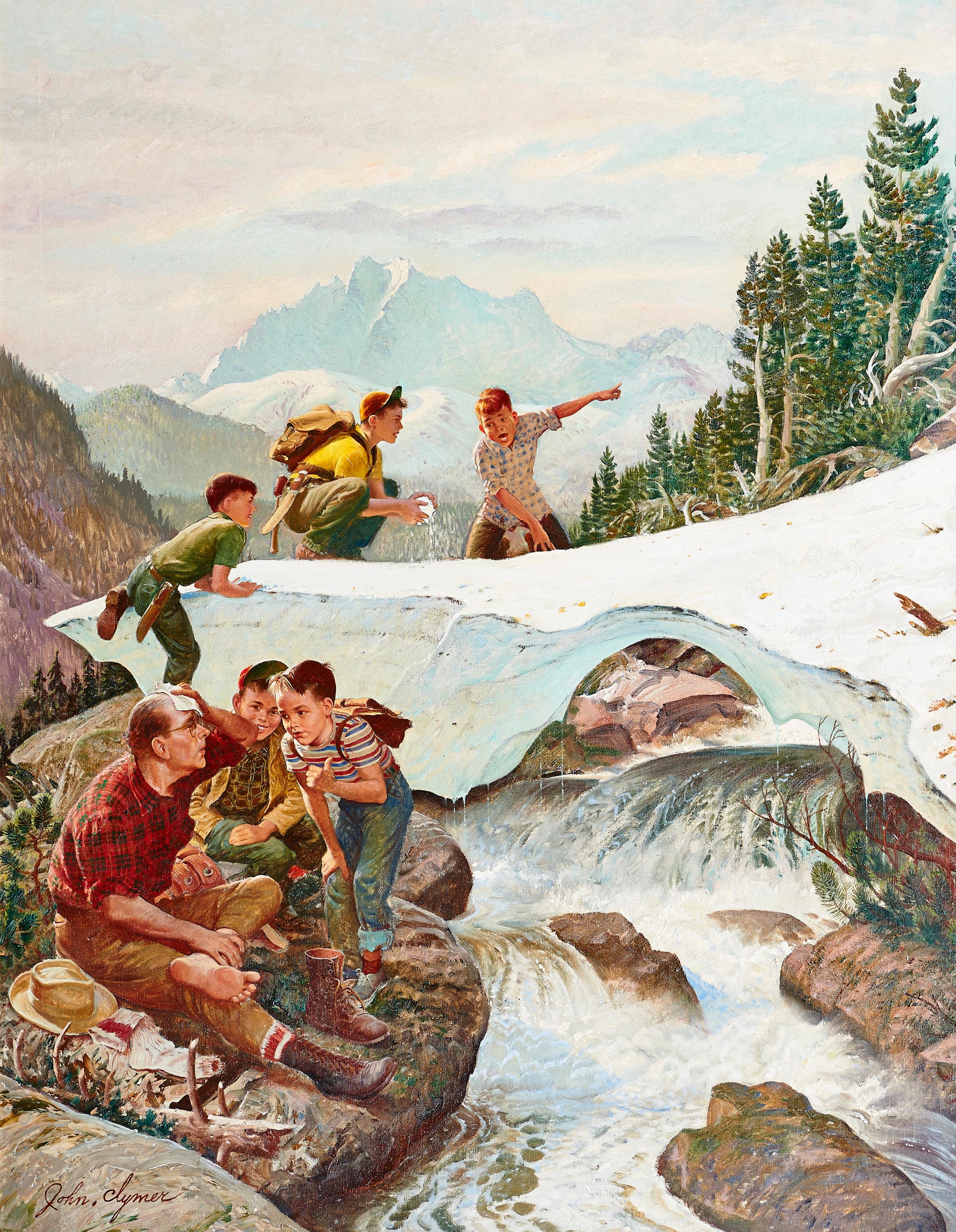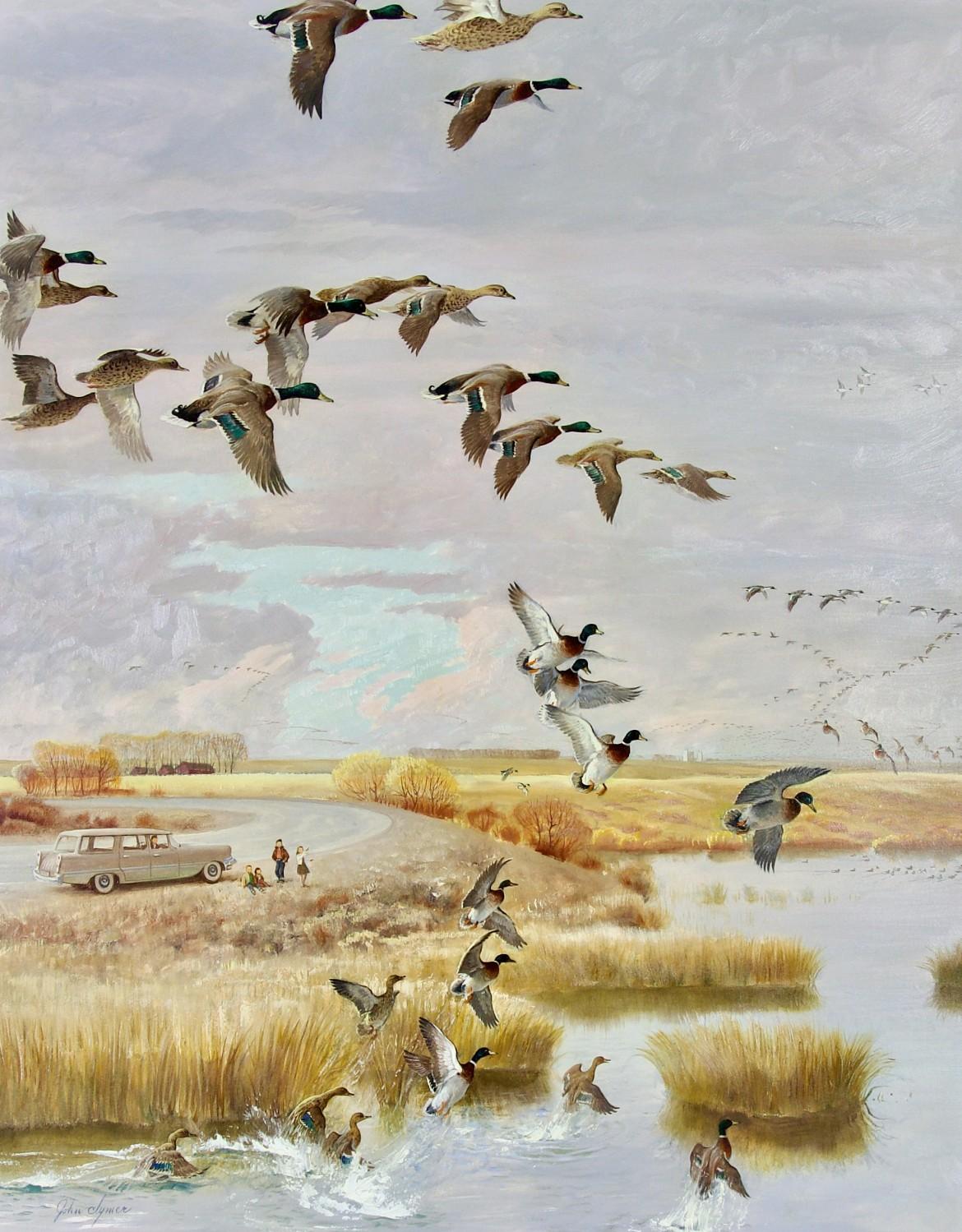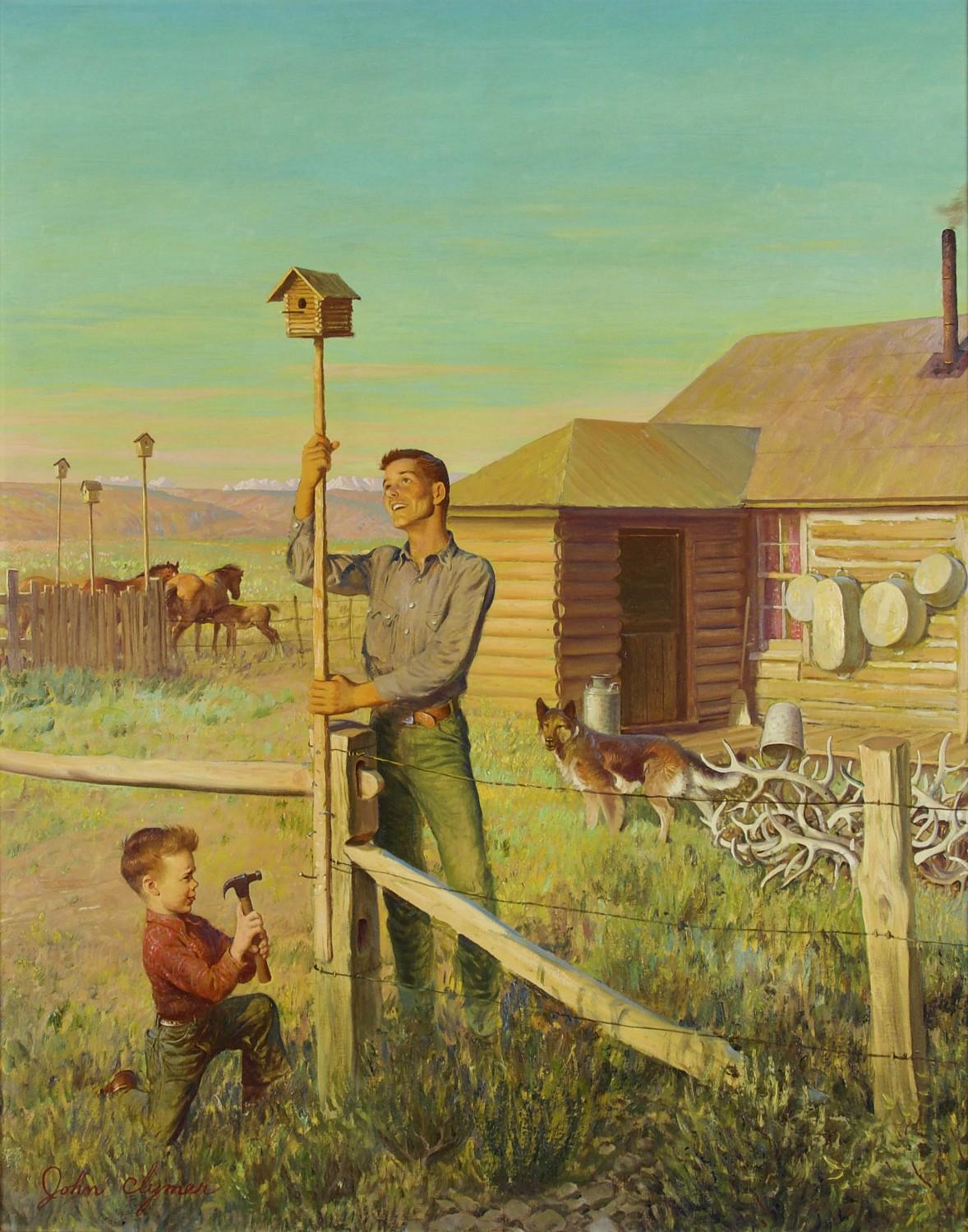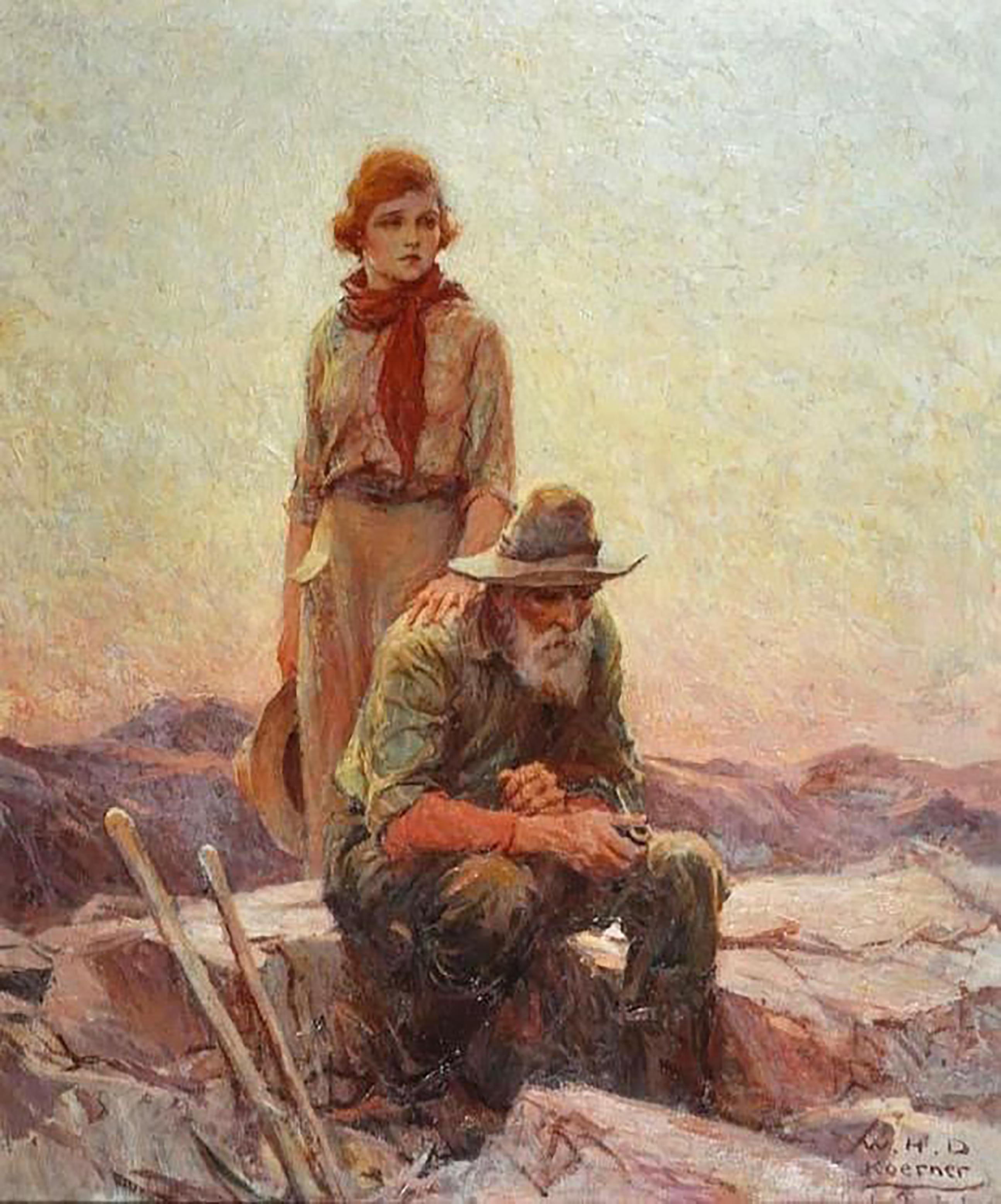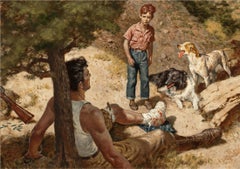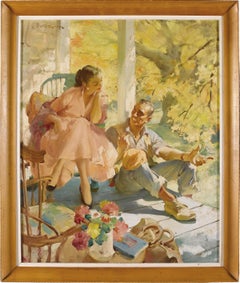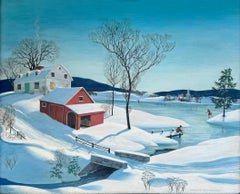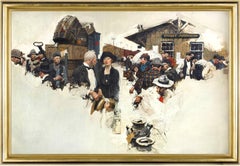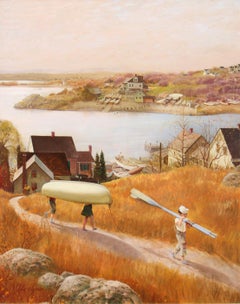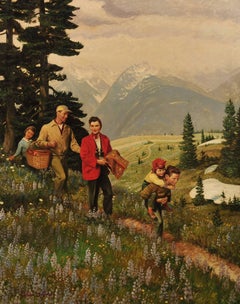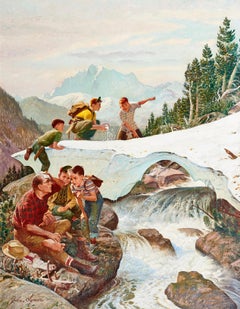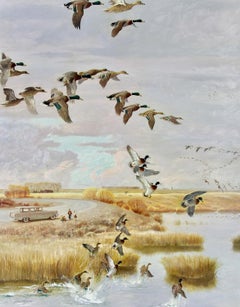Items Similar to Saturday Evening Post cover, August 29, 1959. - Americana
Want more images or videos?
Request additional images or videos from the seller
1 of 20
John Ford ClymerSaturday Evening Post cover, August 29, 1959. - Americana1958
1958
$315,000
£240,834.27
€277,392.43
CA$441,411.58
A$492,794.52
CHF 258,216.92
MX$6,032,288.62
NOK 3,279,357.45
SEK 3,092,017.70
DKK 2,070,208.19
Shipping
Retrieving quote...The 1stDibs Promise:
Authenticity Guarantee,
Money-Back Guarantee,
24-Hour Cancellation
About the Item
This classic Post cover combines the vastness of the American West landscape with the intimacy of iconic Americana: two kids swimming in a rural water hole. The permanence of the majestic hills contrasts with an ephemeral moment of childhood fun. Artist John Ford Clymer depicts the scene from an elevated point of view that integrates a downward view of the kids and an outward view of the landscape. Perhaps he is trying to say that youth are grounded in the present but also the future is out there. The vast landscape represents life's future and the winding stream leads right to it.
This work was painted in 1958 ( per the label from Illustration House. It was published in 1959. This is very common in the publishing world where a world of art is commissioned then it sits a while before being published. Clymer painted many memorable covers for The Saturday Evening Post. It has been estimated he painted more than eighty scenes of pure Americana for these covers between 1945 and 1963. In 1964, after forty years as an illustrator, he discontinued his commercial work and devoted his efforts to painting North American game animals and scenes from Western history.
This work is Oil on Heavy Board and is in mint condition. It looks much better in person.
- Creator:John Ford Clymer (1907 - 1989, American)
- Creation Year:1958
- Dimensions:Height: 33.5 in (85.09 cm)Width: 26.5 in (67.31 cm)
- Medium:
- Movement & Style:
- Period:
- Condition:
- Gallery Location:Miami, FL
- Reference Number:1stDibs: LU38538750182

About the Seller
4.9
Gold Seller
Premium sellers maintaining a 4.3+ rating and 24-hour response times
Established in 2005
1stDibs seller since 2016
115 sales on 1stDibs
Typical response time: 1 hour
- ShippingRetrieving quote...Shipping from: Miami, FL
- Return Policy
Authenticity Guarantee
In the unlikely event there’s an issue with an item’s authenticity, contact us within 1 year for a full refund. DetailsMoney-Back Guarantee
If your item is not as described, is damaged in transit, or does not arrive, contact us within 7 days for a full refund. Details24-Hour Cancellation
You have a 24-hour grace period in which to reconsider your purchase, with no questions asked.Vetted Professional Sellers
Our world-class sellers must adhere to strict standards for service and quality, maintaining the integrity of our listings.Price-Match Guarantee
If you find that a seller listed the same item for a lower price elsewhere, we’ll match it.Trusted Global Delivery
Our best-in-class carrier network provides specialized shipping options worldwide, including custom delivery.More From This Seller
View AllThe 11 Gauge Shotgun - Saturday Evening Post illustration
By Amos Sewell
Located in Miami, FL
Saturday Evening Post interior illustration
Signed lower right
Category
1950s American Realist Figurative Paintings
Materials
Oil, Board
End of the Road, Golden Light Ladies Home Journal, Golden Age of Illustration
By Haddon Hubbard Sundblom
Located in Miami, FL
This painting is as much about the artist's brilliant painting skills and technique as it is about the subject matter. Sundblom's quick bravura brush strokes seem abstract on close i...
Category
1950s Post-Impressionist Figurative Paintings
Materials
Oil
Americana Winter Scene Ice Skaters Mid-Century- Norman Rockwell America
By Charlotte Sternberg
Located in Miami, FL
This charming rural winter scene of ice skaters fully displays Norman Rockwell's America, but it was painted by female artist Charlotte Joan Sternberg. She combines the mid-century A...
Category
1950s American Realist Landscape Paintings
Materials
Egg Tempera
Kindred of the Dust, Frontier Town Cosmopolitan Magazine
By Dean Cornwell
Located in Miami, FL
A somewhat similar Cornwell featuring a strong woman at the center of a the composition just sold at Christie's for $164,000. In this work we also see a strong woman at the center of the composition. Here she surrounded by men.
More than 20 beautifully rendered post-impressionist portraits in character, define Dean Cornwell as one of America's great artists. In his time, he was a famous as Norman Rockwell and was Norman Rockwell's favorite illustrator. "One thing puzzled Dirty Dan extremely. That was the perfectly frank, friendly manner in which his employer and this outcast woman greeted each other, the earnestness with which they conversed, and the effect of the woman's low-spoken words upon the color of Hector McKaye's face."
Morris Weiss collection...
Category
1920s Post-Impressionist Figurative Paintings
Materials
Oil
Trout Rock- American Impressionist
By Frank Vincent Dumond
Located in Miami, FL
This stunning work features Mr. Dumond's trademark green.
Trout Rock
Signed lower left: F. V. Dumond
Titled on stretcher with artist's estate stamp: Trout Rock
From a Texas Estate.
Frank Vincent Dumond was an artist, illustrator, and painter of the Tonalist school...
Category
1930s American Impressionist Landscape Paintings
Materials
Oil
$20,000 Sale Price
20% Off
Water Hunters ( Cowboys in the Old West )
By Stevan Dohanos
Located in Miami, FL
Meticulously rendered account of three prospectors trying to rustle up some water before they can dig up some gold. Magazine Illustration of the Old West, American West, Cowboys Casein on board, Western / Frontier Art...
Category
1950s American Realist Figurative Paintings
Materials
Casein
You May Also Like
Children with Rowboat, Saturday Evening Post Cover
By John Ford Clymer
Located in Fort Washington, PA
Cover of The Saturday Evening Post, October 21, 1953
Image of children carrying a rowboat
Date: 1953
Medium: Oil Paint
Dimensions: 33.00" x 26.50"
Signature: Signed Lower Left
Category
1950s Figurative Paintings
Materials
Oil
Family Picnic, Saturday Evening Post Cover
By John Ford Clymer
Located in Fort Washington, PA
Date: 1952
Medium: Oil on Canvas
Dimensions: 34.00" x 27.00"
Signature: Signed Lower Left
Cover for The Saturday Evening Post Magazine, May 31, 1952.
Clymer's coverscape takes you to Massachusetts' tidelands where the frost is on the pumpkin and the red and gold areon the trees. Gloucester harbor and the inlets roundabout-- for three centuries this haven has been the homeport of renowned and valiant fisherman. They were the Captains Courageous of Rudyard Kipling, the hero’s of Longfellow's The Wreck of the Hesperus and of James B. Connolly's tales of the sea.
John Ford Clymer's success as an artist can be traced to his boyhood in the Kittitas Valley located in the central regions of Washington state. It was there that he developed an enthusiasm for the world around him and an abiding respect for historical accuracy. Over the years John Clymer received numerous awards and honors including the revered Prix de West in 1976, from the national Academy of Western Art. Other great achievements included both gold and silver metals for his oils and charcoal drawings from the Cowboy Artists of America, "Western Artist of the Year" from the National Wildlife Art Collectors Society, and both John and Doris were honored at the Ellensburg National Art Show and Auction for their contributions to western heritage. John's highest honor came in 1988 when he was awarded the prestigious Rungius Medal from the Wildlife of American West Art...
Category
1950s Figurative Paintings
Materials
Canvas, Oil
Tired Hiker, The Saturday Evening Post Cover
By John Ford Clymer
Located in Fort Washington, PA
Date: 1950
Medium: Oil on Canvas
Dimensions: 36.00" x 28.00"
Signature: Signed Lower Left
Original cover illustration for The Saturday Evening Post...
Category
1850s Figurative Paintings
Materials
Canvas, Oil
South for the Winter, Saturday Evening Post Cover
By John Ford Clymer
Located in Fort Washington, PA
Cover of The Saturday Evening Post, October 26, 1957 showing ducks in autumn flying south for the winter
The Post described, "When Jack Frost whistles down the breezeways, right-minded birds take off toward the balmy Southland. Some human beings are depressed because they haven't wings to do likewise, yet, all told, it's probably nicer to be a man than, say, a mallard duck. This is a migratory flyway in the lakelands of Alberta, favored by birds of that feather which like to swipe their meals from grainfields and rest their weary bones on soft, or even hard, water. Down the Mississippi Valley this sky traffic will v-wint its way, and the smarter ducks that go clear to the Gulf Coast can take a gander at the New Orleans Mardi Gras...
Category
1950s American Realist Landscape Paintings
Materials
Oil, Board
Putting Up Birdhouses, Original Cover for The Saturday Evening Post Cover
By John Ford Clymer
Located in Fort Washington, PA
The Saturday Evening Post cover, June 9, 1951
'John Clymer, while migrating through Wyoming in a motorcar, was amazed at the variety of birds that go there summers to keep house....
Category
1950s American Realist Landscape Paintings
Materials
Oil, Canvas
Saturday Evening Post Cover
By William Henry Dethlef Koerner
Located in Fort Washington, PA
Signature: Signed
Cover of The Saturday Evening Post, October 22, 1921
Category
1920s Figurative Paintings
Materials
Canvas, Oil
